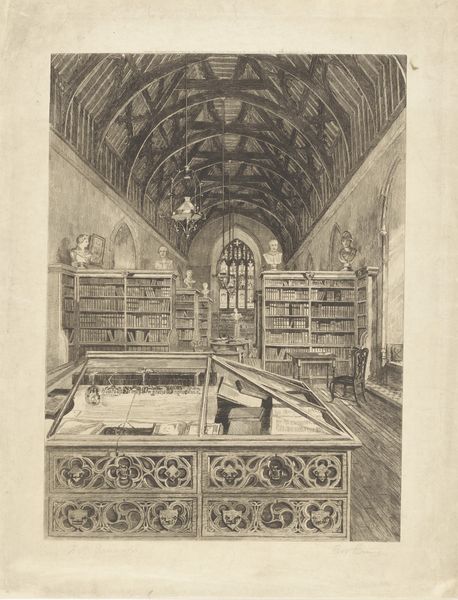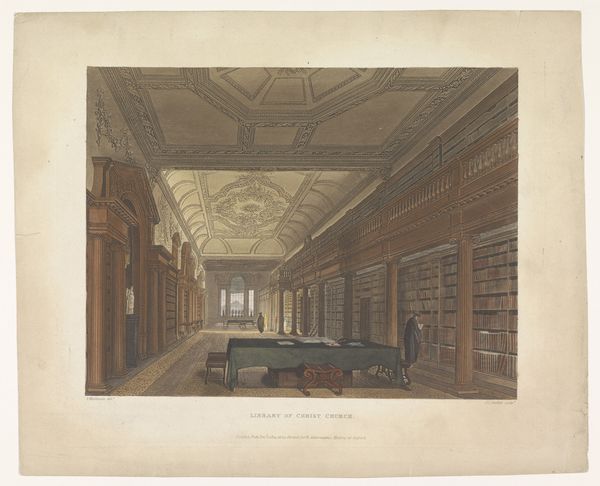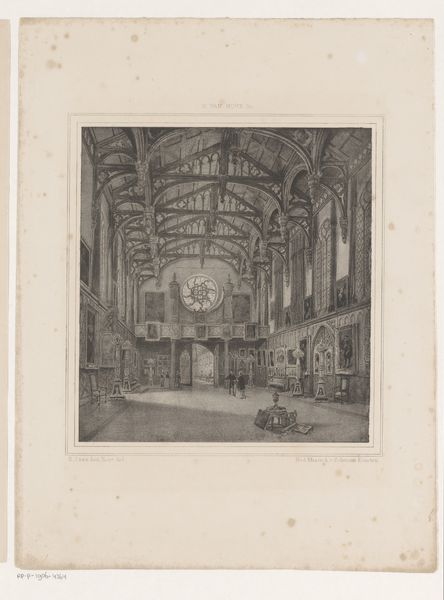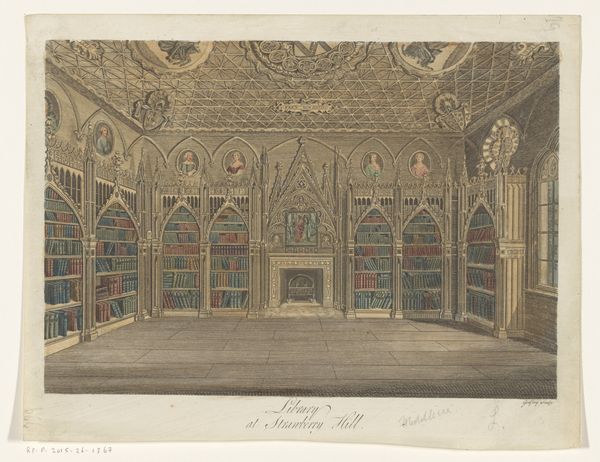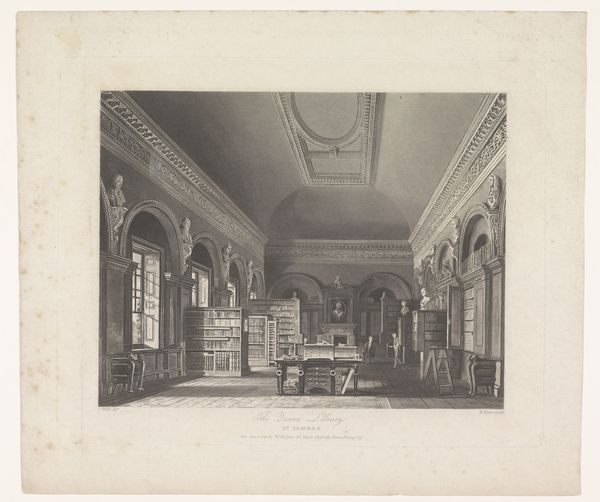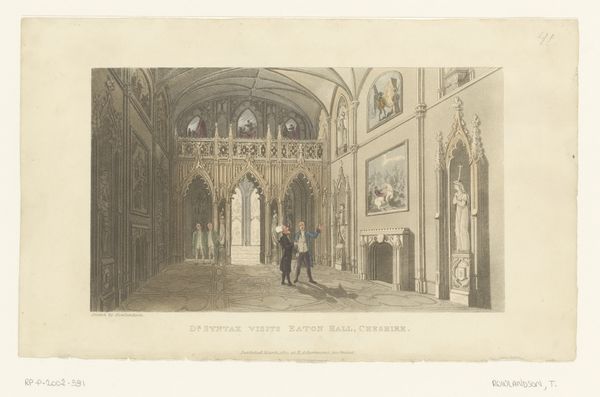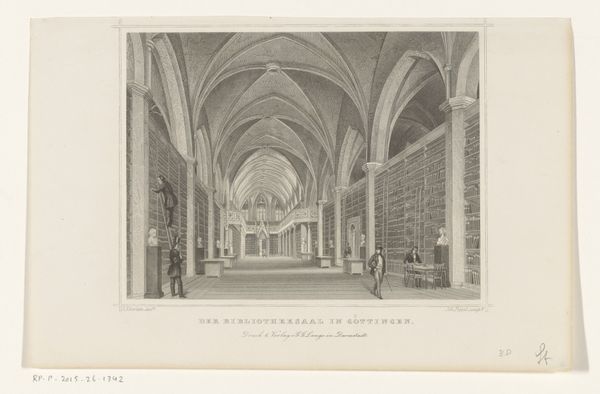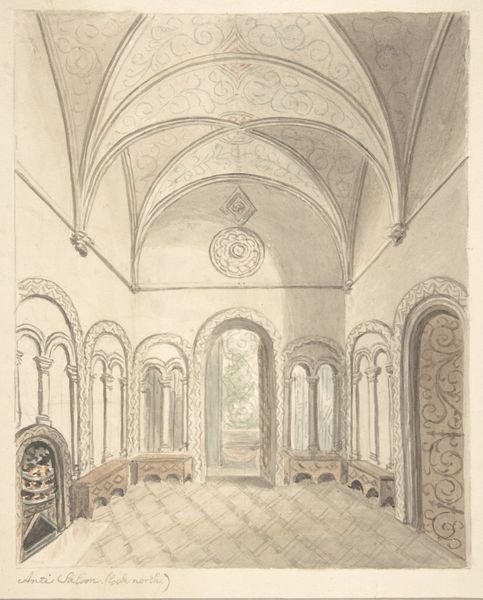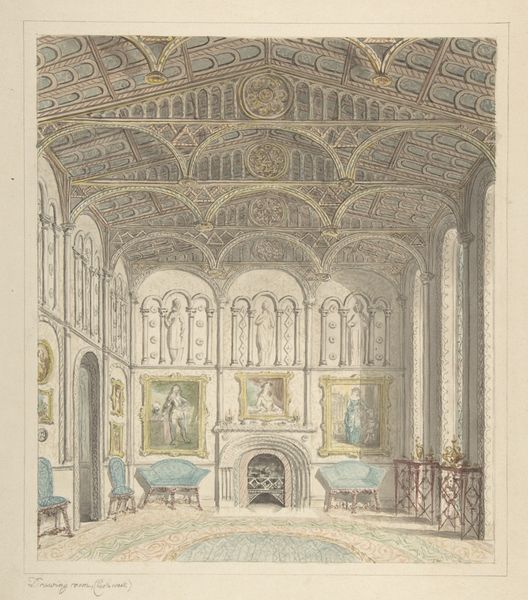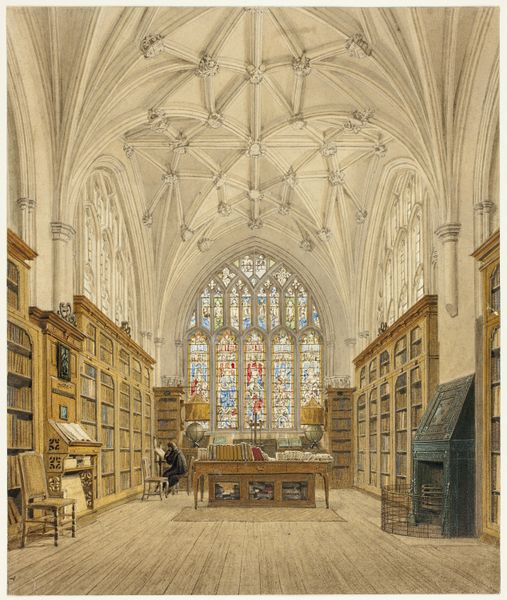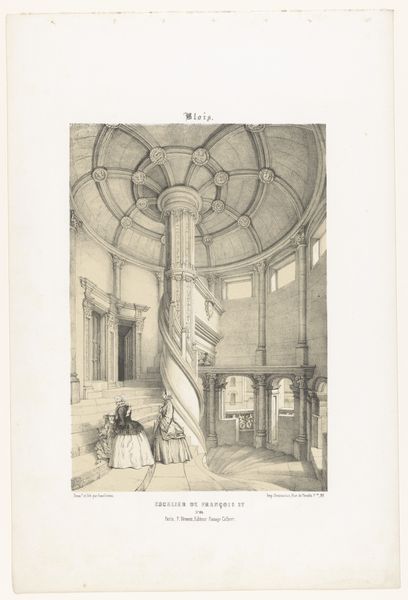
Lea Castle, View in the Library, Looking East 1811 - 1821
0:00
0:00
drawing, print, pencil
#
portrait
#
drawing
#
amateur sketch
# print
#
landscape
#
etching
#
romanticism
#
pencil
#
history-painting
Dimensions: sheet: 7 1/4 x 6 3/4 in. (18.4 x 17.1 cm)
Copyright: Public Domain
Editor: Here we have John Carter's "Lea Castle, View in the Library, Looking East," created sometime between 1811 and 1821 using pencil, print, and etching. There's something so captivating about its understated nature, almost like a personal glimpse into a private space. What draws your eye when you look at it? Curator: The architectonic structure is most compelling. Note the intricate vaulting of the ceiling, and how it echoes the arched windows and fireplace. The linearity in the bookshelves and the figure at the desk create a series of receding planes, composing depth and spatial tension within the composition. Do you see how the light source, seemingly from the windows on the left, sculpts the forms, further emphasizing the architectural elements? Editor: Yes, I see that now, how the light interacts to create definition. But I am curious about the globe in the composition - a statement piece that is almost at the centre of the painting - does this serve more than compositional intention? Curator: It is less about subject matter and more about how those forms contribute to the overall structure of the artwork. The curve of the globe perhaps mimics that of the arches in the architecture and pulls forward the plane that includes the portrait above the mantle place. Are you noticing any relationships between those forms, and how the artist carefully renders them? Editor: I think I am beginning to! Focusing on the interplay of form, light, and the receding planes of the architecture has offered a deeper appreciation beyond my initial reaction to its understated quality. Curator: Indeed, sometimes, what isn't immediately apparent holds the most significant insights. It has encouraged a reevaluation of what is present beyond the presented subject.
Comments
No comments
Be the first to comment and join the conversation on the ultimate creative platform.
